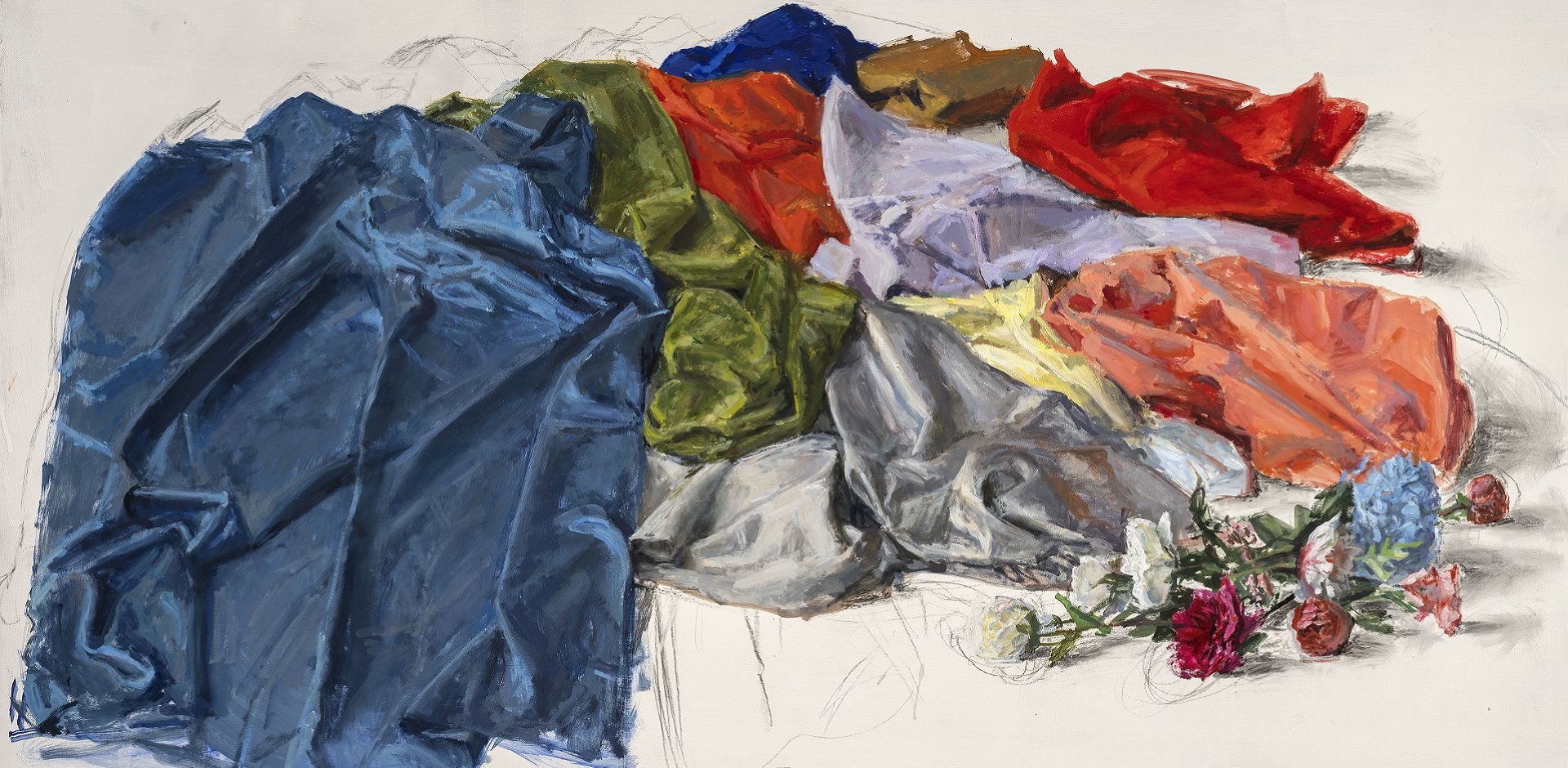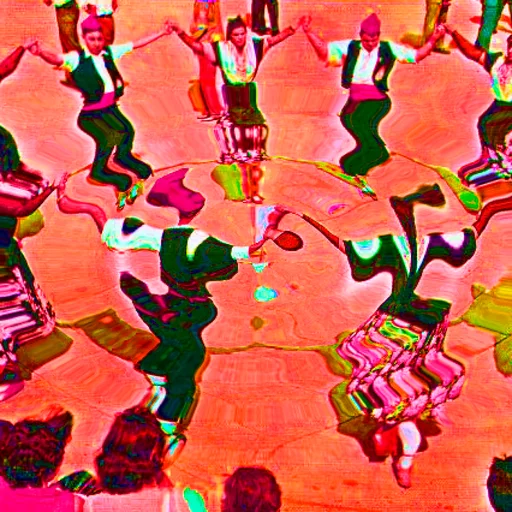Un encuentro. Leticia Feduchi
For a long time—much longer than the period Marcel Proust recalled spending going to bed early—I walked down the same street on my way to work. And yet, despite the differences, it was something very similar: life riding along the rail of routine and, because of that, unnoticed.
Proust also recalled how quickly he would fall asleep, only to wake again shortly after, then recovering, after some confused moments, a clear and naked vision in the dark. As for me, during that walk, I barely saw anything; or rather, I didn’t look at anything—my attention was caught up in my thoughts and in the images they conjured, as if everything around me—shops closed at that early hour, cars, faces reddened by the cold—had faded into a mist of fleeting presences, bodiless, lost in the irretrievable limbo of the unnoticed.
In the mid or late 1990s, on that same street, just a bit further down from where the Fernández Braso gallery is now located, the same owners ran another one, the small Juan Gris gallery, where I first saw Leticia Feduchi’s paintings. In the window, with the place still dark at that early hour, the painted objects—probably fruits or flowers—emerged as if from some depth, with a glow and firmness that did not exist elsewhere, in the grey shade of the street. I wouldn’t stop, but for a good while the impression of those luminous and crisp paintings remained vivid as I kept walking, and one could say they accompanied me.
A little further on, still within the opening pages of À la recherche…, Proust writes that, now fully awake, it seemed that “the good angel of certainty had immobilized everything around me…”. The stillness of things and our own certainty about them go hand in hand. The rest is time, movement, flight—we could say, more or less Proustianly. To hold onto what is slipping away is an art; in great measure, it is the deep desire from which art is born—the illusion that dreams, against all evidence, that nothing is ever lost.
However, this pursuit—far more evident among painters who practice the figurative art of painting—is not strictly about preserving what is doomed to be lost, but about recreating it, or simply creating it anew. Since that first discovery on Villanueva Street in Madrid, Leticia Feduchi’s paintings haven’t changed much. Perhaps everything has been gradually refined, increasingly concentrated and stripped down, reduced to the pure event in which things become present. That essentiality draws close to abstraction, to which Leticia has never been a stranger; for example, some of her canvases show fabric gathered into a bouquet of different colors, with no meaning beyond their presence in the void, forming a mosaic. Fabrics that tempt one to refer to them evocatively as draperies, a now-archaic word. A bowl of mandarins is titled Mandala, bearing witness to that border with abstraction where, nevertheless, concrete realities rise to the surface of the painting’s awareness.
There were other moments—as when she worked in the Garraf years ago—during which she painted fairly large canvases, densely populated with objects, so to speak: loaves of bread, stones, pieces of wood, branches, and plant stems…, each with its precise atmosphere, the light, the hour of each day. These were almost cluttered, baroque compositions. But that hasn’t been the norm in her long career. The kind of magical realism from her beginnings has also disappeared—a red table next to a chair has always reminded me of Feliu Elias. Now, in simple bowls or in open air, green apples, pomegranates, a few lemons, fresh roses and others already withered awaken into clarity… There is nothing to distract from their sharp vision, stripped of time and space; one could say that the objects have finally been saved from those two threatening dimensions.
I believe appearance is the most fitting word to describe what happens in Leticia Feduchi’s paintings. Objects and beings emerge—after a journey from a muddy depth in which they perhaps existed in confusion—into the thin surface of a plane, like a face approaching us from the other side of glass, or a reflection touching the skin of the air after having slumbered in the turbidity of a pond. To appear, to arise, to surface… Everything arrives into presence, and painting bears witness to the moment when we perceive, as if by miracle, its firm material body, as if that were—and in a certain sense it is—the precise instant when its flesh or pulp manifests itself.
Among the painters and paintings with whom Leticia has always felt accompanied, there are many from both the past and the present (Dürer, Van Eyck, Meléndez… but also Matisse, Vuillard, Helen Frankenthaler…), though their common denominator clearly relates to the representation of matter, to the recreation of its rich substance. Even so, her preference for contemporary London painters may have stood above the others: especially Lucian Freud, also Paula Rego, Frank Auerbach, Avigdor Arikha—the palpable, tangible painting of all of them. When I see her landscapes, I always recall those of Arikha: harsh, dry, bristly, and yet as fragrant as the slopes of a mountain from which, far in the distance, you can see the Mediterranean.
Recalling Freud—whose paintings, like those of Antonio López, have accompanied her since the 1980s—she speaks of “constructing matter” and, in a somewhat Cézannian manner, of “painting the motif, or the object, its limits inward.” It’s a learned lesson: the concentration on the thing itself, and also the distance that vision itself establishes from the untouchable life of the object. The magnificent recent portrait of Alba, which we now see, her paint diluted on wood, recalls other portraits of hers in which the fleshiness of Freud was more present than it is now. Still, that affinity remains in another aspect that is perhaps even more important than what we might call the epiphany of flesh. I’m referring to the kind of stupefaction that seems to paralyze her subjects, caught by our gaze—something completely opposite to the typical posed look so common in portraiture.
There is something Venetian as well. There is color and its splendid glow, but also its exhaustion and its fall. Often, color is the sole accent through which things are revealed, as if they had been reduced to the most sumptuous or the most melancholic element of their sensoriality. A painter as Venetian as Ramón Gaya once said in an essay that the attempt to capture living reality by completely reproducing all its details is doomed to fail, whereas—his word—just one of its accents (the oily gleam of the setting sun, the glow of light passing through a glass of water) is enough to express it.
That selective gaze can evoke, through touch alone, the entirety of things. That bright, almost shameless clarity that first drew me long ago to Leticia’s paintings—I now know it wasn’t just visual; there was—and still is, more essentially than before—something corporeal that, from fruits or fabrics, summons the fingers, the hands, to an experience of their deepest materiality. We want to touch what we see, and in that desire lies a yearning for wholeness. The fabrics that now wrinkle across invisible surfaces (which they nonetheless give form to) are not indifferent; from velvet to silk, there are not only contrasts of density and weight, but their different substances distinguish them, as much as a difference in breath. Touch is the sense—which Aristotle refers to somewhere—that most fully bears witness to the carnal reality of life. We are skin, bodies among bodies, flesh that trembles at the world’s contact.
Backgrounds have also disappeared—nothing supports the objects, no base holds them up. Their appearance sometimes reaches us with a hesitant tremor; the charcoal marks left visible on the priming declare the impossibility of capturing life within a closed representation like a cage. Not long ago, the National Museum of Sculpture in Valladolid devoted an exhibition to the use artists of all periods have made of the unfinished—it was titled Non finito, a frequent expression in early treatises. That device was often used by 19th-century painters—the brushstrokes that, moving away from the central subject, left the primed background visible, the half-sketched drawing…—but all that eventually became a kind of affectation. In Leticia’s paintings, by contrast, that renunciation has a deeper reason. The hand hesitates, wishing to “construct matter,” but without violating its freedom. Things are not ours. The brush proceeds carefully, not to harm; the charcoal hesitates, leaving behind traces of its attempts and its care not to disturb living nature.
Her studio is in the Gràcia district; it’s a quiet street. It feels good to work when hardly anyone passes by outside—on weekends the city’s murmur vanishes. Silence surrounds her, serenity, stilleben. The faint whisper of the brush as it moves. In Leticia Feduchi’s gaze converges the story of an entire family devoted to architecture and design—a distinguished surname in those prestigious fields. There’s a splendid color photo by Català-Roca in which she appears (she too) with a surprised look, among paintings, as if a fraternal wave had bound her to them. Rafael Moneo, Álvaro Mutis, Eduardo Mendoza… have written about her. Yet her name has remained distant from the more conventional circuits in which contemporary art recognizes itself, obsessed with synchrony. To be a traditional painter is hard—like transgressing a taboo. Contrary to what people think, it is something that involves invention and the courage to hold firm in the midst of a storm. The silence of the studio, flooded with light, the calm of work: that is all that matters, while far away everything seems to be swept from here to there and to vanish all too quickly.
ENRIQUE ANDRÉS RUIZ





